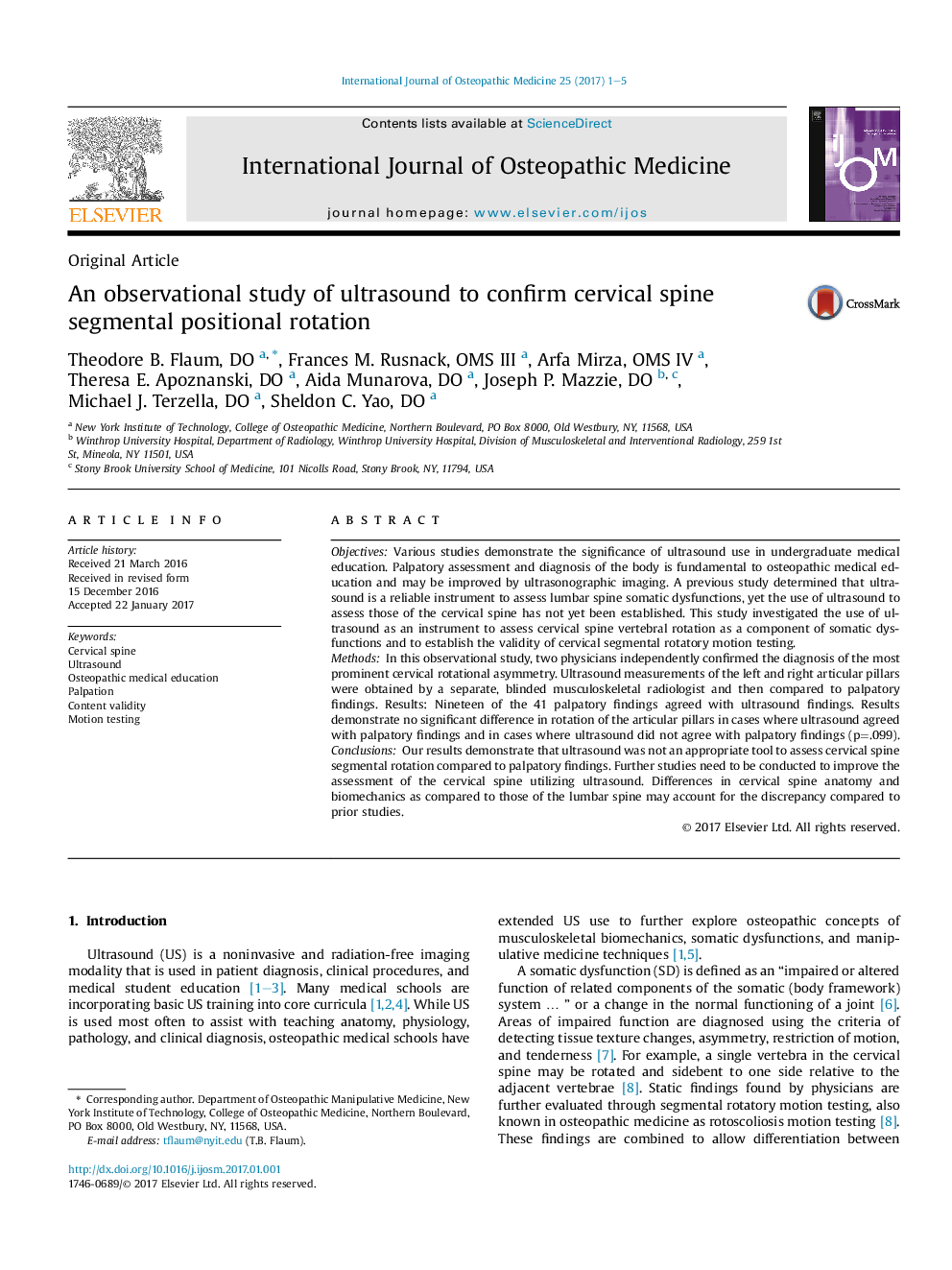| کد مقاله | کد نشریه | سال انتشار | مقاله انگلیسی | نسخه تمام متن |
|---|---|---|---|---|
| 5563865 | 1562983 | 2017 | 5 صفحه PDF | دانلود رایگان |
- Palpatory assessment and diagnosis are fundamental to osteopathic medical education and may be improved by ultrasonographic imaging.
- This study investigated the use of ultrasound to assess cervical spine segmental positional rotation.
- Results show no significant difference in segmental rotation in cases where ultrasound did and did not agree with palpation.
- Ultrasound many not be an appropriate tool for evaluating segmental positional rotation of the cervical spine.
ObjectivesVarious studies demonstrate the significance of ultrasound use in undergraduate medical education. Palpatory assessment and diagnosis of the body is fundamental to osteopathic medical education and may be improved by ultrasonographic imaging. A previous study determined that ultrasound is a reliable instrument to assess lumbar spine somatic dysfunctions, yet the use of ultrasound to assess those of the cervical spine has not yet been established. This study investigated the use of ultrasound as an instrument to assess cervical spine vertebral rotation as a component of somatic dysfunctions and to establish the validity of cervical segmental rotatory motion testing.MethodsIn this observational study, two physicians independently confirmed the diagnosis of the most prominent cervical rotational asymmetry. Ultrasound measurements of the left and right articular pillars were obtained by a separate, blinded musculoskeletal radiologist and then compared to palpatory findings. Results: Nineteen of the 41 palpatory findings agreed with ultrasound findings. Results demonstrate no significant difference in rotation of the articular pillars in cases where ultrasound agreed with palpatory findings and in cases where ultrasound did not agree with palpatory findings (p=.099).ConclusionsOur results demonstrate that ultrasound was not an appropriate tool to assess cervical spine segmental rotation compared to palpatory findings. Further studies need to be conducted to improve the assessment of the cervical spine utilizing ultrasound. Differences in cervical spine anatomy and biomechanics as compared to those of the lumbar spine may account for the discrepancy compared to prior studies.
Journal: International Journal of Osteopathic Medicine - Volume 25, September 2017, Pages 1-5
